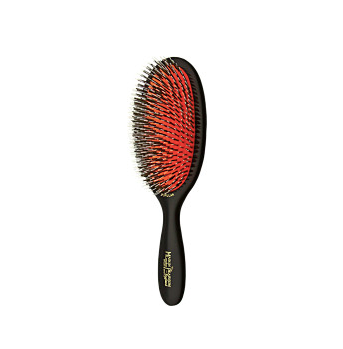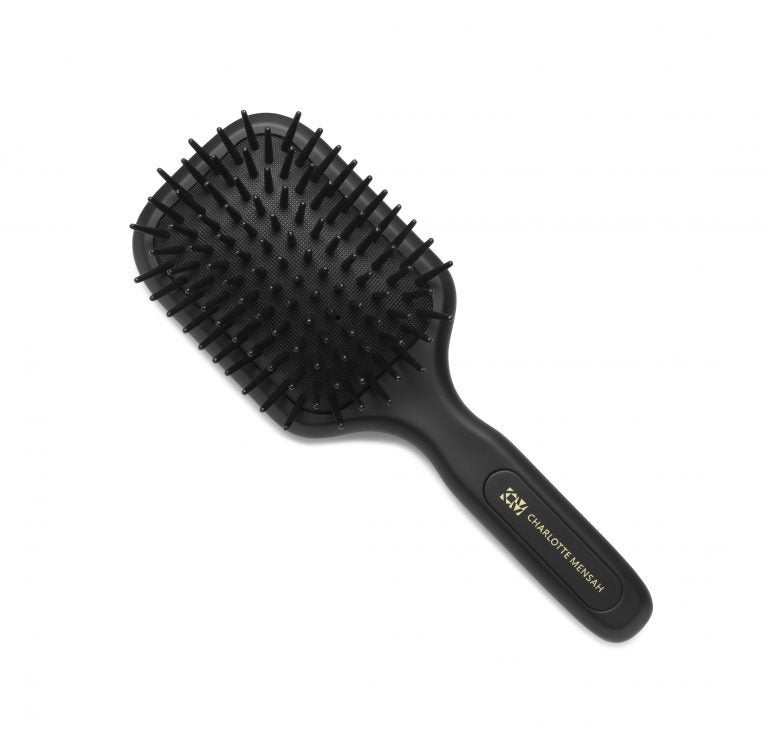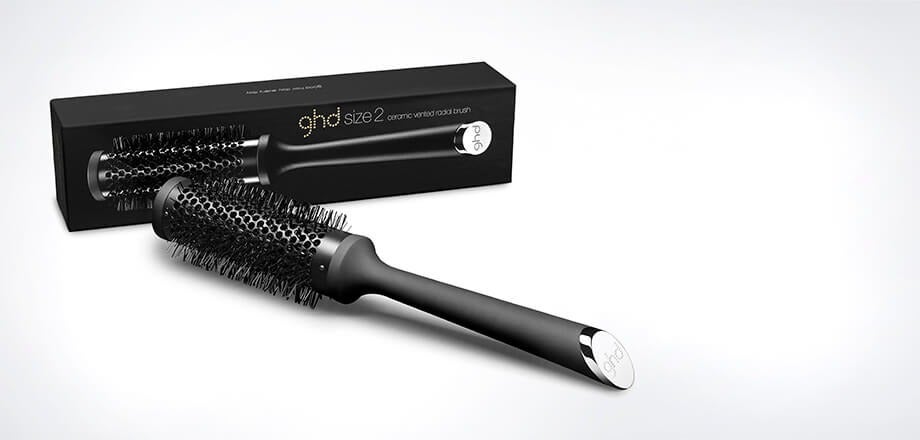Dear Daniela,
There are two kinds of people when it comes to lip balm: those who lose them before finishing them, always have a handful on the go but will use basically any brand that's on sale, and those who have their ride-or-die favourite and always use the last drop before starting a new one. I think hairbrushes have a similar energy. Some of my friends will use any comb or brush that's lying around, others have a brush that they were given as a teen and is the only thing they trust to tame their hair. A Mason Pearson boar brush is a serious investment but is it just a status symbol or will it pay dividends for your hair in the long run?
I asked Charlotte Mensah, a multi-award-winning hairstylist who specialises in textured hair, for her take on all things brush-related. She's worked on enough high-profile shoots and high-profile clients in her own salon to know a thing or two. "The one kind of hairbrush that everybody needs, regardless of how much you style your hair, is a good paddle brush," explained Charlotte. "A good paddle brush that's gentle on the hair can even be used on textured or fine hair when wet to detangle and distribute conditioner throughout the hair," she added.
I asked Charlotte Mensah, a multi-award-winning hairstylist who specialises in textured hair, for her take on all things brush-related. She's worked on enough high-profile shoots and high-profile clients in her own salon to know a thing or two. "The one kind of hairbrush that everybody needs, regardless of how much you style your hair, is a good paddle brush," explained Charlotte. "A good paddle brush that's gentle on the hair can even be used on textured or fine hair when wet to detangle and distribute conditioner throughout the hair," she added.
AdvertisementADVERTISEMENT
As any curly girl will know, you don't want to be brushing out your curls when they're dry, so you're best off doing that detangling during your wash. That being said, hair is delicate when wet, so you'll want to proceed with caution. "One thing to avoid with paddle or plastic brushes is those with little spheres or balls at the end of the bristles," advised Charlotte. "Those little balls can cause knots and tearing, especially on delicate afro hair, so choose one with flat bristles that are slightly rounded at the end. The other thing to look for is a good amount of air in the cushion of the brush. A generous amount of air in the cushion will make the brush glide through the hair better, and be much gentler on the scalp." Charlotte has a pretty much perfect paddle brush in her own range, FYI.
As for your question about boar bristle brushes? When I mentioned them to Charlotte, she said she is a firm fan. "If you want a really sleek, polished look, especially if you’re trying to do an up-do on afro hair, they're perfect. Something about the countless natural fibres really pick up and smooth every last hair into place," she explained. On my hair, of which there is a lot, I find that my Mason Pearson is perfect after blow-drying to give it a shinier, more salon-esque finish, but I definitely save it for those key moments. It's an expensive brush and it doesn't feel right somehow to use it as an everyday tool. "They really scoop up the hair so beautifully and make it really pliable and easy to work with. I love them," enthused Charlotte.
AdvertisementADVERTISEMENT
Illustrated by Olivia Santner
The other kind of brush you might want in your kit is a round brush, but if you're not one for blow-drying, you don’t need one. If you love that bouncy, smooth salon look, a round brush is the only way. Charlotte recommended the ghd line of ceramic brushes, saying: "They give a really nice amount of tension on the hair, especially on afro hair, which is key to getting a good blowout. They're not too expensive and there’s a range of different sizes to help you get different looks." (The bigger the brush, the bigger the curl, so choose a small one if you want super defined curls.) A good home blow-dry can be a tough nut to crack but remember the fundamental basics: "Maintain good tension, use a nozzle on your hairdryer, and place the nozzle towards your hair at a slight angle and keep your wrists moving," said Charlotte.
One last thing? I know you don't need me to tell you how to brush your hair but as Charlotte reminded me, you always want to start at your ends and work your way up. "If you start on the mid-lengths or at the root, you'll yank out so much more hair. Work the tangles out from the bottom up, and go gently."
Good luck!
Daniela
Got a question for our resident beauty columnist Daniela Morosini? No problem, qualm or dilemma is too big, small or niche. Email deardaniela@refinery29.uk, including your name and age for a chance to have your question answered. All letters to ‘Dear Daniela’ become the property of Refinery29 and will be edited for length, clarity, and grammatical correctness.
AdvertisementADVERTISEMENT









